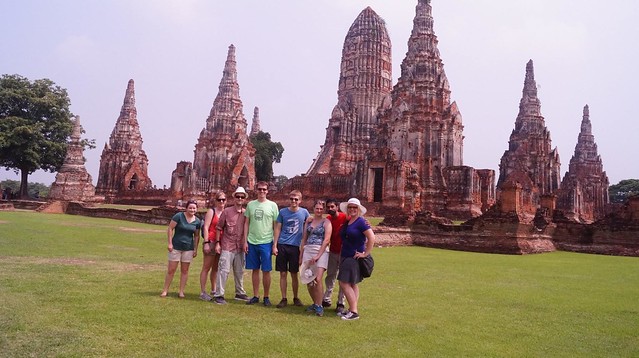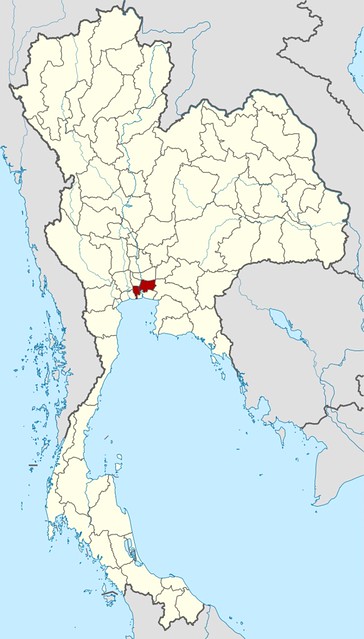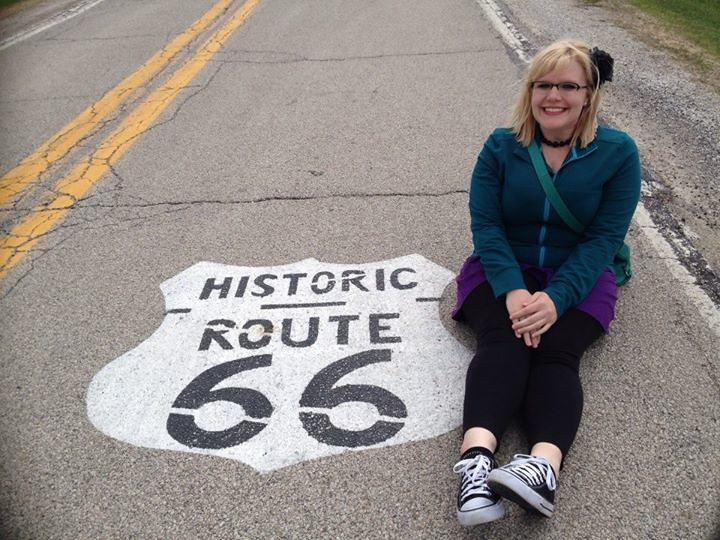After spending a few weeks visiting friends in Bangkok, Thailand and what felt like a few weeks on the return airplane journey, some simple things delighted me about coming back home to Cincinnati. What we perceive as ordinary on any given day, the following caught my attention and warmed my appreciation about being in such a wonderful city.
1.) Descending into CVG airport and seeing the palate of deciduous trees in vibrant autumn colors.
2.) The scent of Cincinnati-style chili wafting through the airport terminal.
3.) The people.
For the entire connecting flight from Los Angeles to CVG, I chatted with a family from Fort Thomas. A man sitting behind us joined in from Pleasant Ridge. Cincinnatians are kind, conversational people.
4.) Positivity about the streetcar.
Riding the airport monorail to baggage claim, I overheard a discussion between an airport employee and a passenger she was assisting. The employee spoke highly about the Cincinnati Streetcar construction, and the visitor with mobility limitations was excited to soon have a new way to see the city.
5.) A chill in the air, which led to my joyful shouting, "I feel cold! I actually feel cold!"
Very welcoming after spending time in a climate that was humid and 90º+ during their "winter" season.
6.) Giving my partner a big hug when he met me at the airport.
7.) Western-style toilets and toilet paper.
8.) Wearing leggings, boots, and a jacket.
And feeling cold. Did I mention I missed feeling cold?
9.) Spacious sidewalks.
Bangkok has a massive population of 8 million, plus you have to share the sidewalk with motorcycles and an endless array of street vendors. It makes New York City feel like a stroll through a small town.
10.) Good craft beer.
Thailand may have lax drinking laws, but their local beers all taste like Budweiser.
FROM TRI-STATE TO THAI STATE
I spent the majority of the past month in Bangkok, Thailand, visiting my friend Weg who has been teaching English as a second language across Asia. Joining us were six friends from The States, most of whom also live in Cincinnati. Our group grew to be friends during our university years and as we got older, some moved away, some settled down and lost touch. Amusingly, it took traveling halfway around the world to reunite, even when a few of them live only a couple blocks away from me back home.
It was my first time to this part of the world, and what an experience! The sights, the food, the culture and drastically different way-of-life compared to The States. I learned to appreciate the granted comforts of America, but also grew fond of Thai customs such as Buddhism practices, bartering for goods, work ethic, politeness, and the availability, convenience and affordability of produce and healthy foods.
A brief geography lesson: Bangkok is the capital of Thailand and is as populated as New York City, home to 8 million people. Humans inhabited the area as long as 40,000 years ago, but the country's origins date back to the early 1200s A.D. as part of the Khmer Empire. It was known as Siam until the 1930s, when the king renamed it Thailand translating to "land of freedom." It's namesake refers to Thailand being the only country in Southeast Asia to avoid being colonized by a European nation.
Thailand is roughly the size of Texas and shares its border with the ocean, Cambodia, Myanmar, Malaysia, and Laos. 95% of citizens are Buddhists. Thailand's government is a monarchy with the world's longest reigning king, who has been in power since 1946.
Bangkok had it's big boom during the 1960s, and now ranks as Asia's 6th most powerful economic center. As it's a newer metropolis, it has commodities of Western nations, but it still classified as a developing country for a number of reasons, such as inadequate infrastructure and urban planning, lack of drinkable water from the tap, and plumbing that cannot handle toilet paper.
Thais have a saying, "Mai ben rai," which translates to "No problem." Things may not always make sense or go as planned, but Thai people seem to take things as they come and make the best of it. And that's pretty terrific.
During my stay, we crammed every bit of Bangkok into each day. From bicycling around an island, to swimming in the bluest, clearest waters, being picked up by an elephant or getting blessed by a monk, every day was an adventure. Let's not forget the oodles of Wats (temples), giant Buddha statues, weird spicy food, and tuk-tuks; they're an integral part of this story as well. Over the coming weeks, I'll be elaborating on my journey with plenty of pictures and whimsical anecdotes about the country which Travel + Leisure Magazine ranks #1 tourist destination in the world.
 |
| Weg and I riding a ferry to the island Ko Sichang. |
It was my first time to this part of the world, and what an experience! The sights, the food, the culture and drastically different way-of-life compared to The States. I learned to appreciate the granted comforts of America, but also grew fond of Thai customs such as Buddhism practices, bartering for goods, work ethic, politeness, and the availability, convenience and affordability of produce and healthy foods.
A brief geography lesson: Bangkok is the capital of Thailand and is as populated as New York City, home to 8 million people. Humans inhabited the area as long as 40,000 years ago, but the country's origins date back to the early 1200s A.D. as part of the Khmer Empire. It was known as Siam until the 1930s, when the king renamed it Thailand translating to "land of freedom." It's namesake refers to Thailand being the only country in Southeast Asia to avoid being colonized by a European nation.
Thailand is roughly the size of Texas and shares its border with the ocean, Cambodia, Myanmar, Malaysia, and Laos. 95% of citizens are Buddhists. Thailand's government is a monarchy with the world's longest reigning king, who has been in power since 1946.
Bangkok had it's big boom during the 1960s, and now ranks as Asia's 6th most powerful economic center. As it's a newer metropolis, it has commodities of Western nations, but it still classified as a developing country for a number of reasons, such as inadequate infrastructure and urban planning, lack of drinkable water from the tap, and plumbing that cannot handle toilet paper.
 |
| At a wat circa 1200 A.D. in Ayutthaya, the first capital of Thailand. |
Thais have a saying, "Mai ben rai," which translates to "No problem." Things may not always make sense or go as planned, but Thai people seem to take things as they come and make the best of it. And that's pretty terrific.
 |
| The clearest, bluest ocean I've ever seen at Ko Sichang |
During my stay, we crammed every bit of Bangkok into each day. From bicycling around an island, to swimming in the bluest, clearest waters, being picked up by an elephant or getting blessed by a monk, every day was an adventure. Let's not forget the oodles of Wats (temples), giant Buddha statues, weird spicy food, and tuk-tuks; they're an integral part of this story as well. Over the coming weeks, I'll be elaborating on my journey with plenty of pictures and whimsical anecdotes about the country which Travel + Leisure Magazine ranks #1 tourist destination in the world.
WHIMSY ON THE ROAD
Whimsy On The Road is the travel blog companion to CincyWhimsy.com, which focuses on urban exploration around Cincinnati, Ohio.
Recently, we set off to experience the Great American Roadtrip: a 2,448 mile journey across The States along Route 66. Contrary to popular belief, there is still plenty to see and do along the old motorway. (It kept us entertained for 19 days!) With summer at our doorstep, I'll be sharing tales from our journey on Whimsy On The Road, in hopes to inspire others to venture along the Mother Road, be it for a weekend or an extended vacation.
From roadside vernacular and Art Deco architecture to some of the kindest people and delicious scratch-made regional fare, Route 66 is a step back into a slower-paced, simpler time; a pre-franchised era of America.
What makes Route 66 significant?
Conceived in 1926, Route 66 became the first paved transcontinental highway spanning from Chicago, Illinois to Santa Monica, California. Crossing through eight states, it became a primary artery in transporting people from the Midwest to western states and the Pacific Ocean. Route 66 followed the lay of the land, constructed from existing dirt roads and cattle paths used by early settlers. It helped thousands of Okies migrate from the Dust Bowl during the 1930s, delivered military vehicles to the Pacific Coast during World War II, and evolved into a family vacation destination by the 1950s.
To meet the needs of the travelers, mom-n-pop businesses blossomed in small towns along the way, providing basic services like petrol stations, motels, trading posts and diners. While many of these are no longer in operation, plenty of landmarks still exist today. Route 66 is an experience that foreign tourists call, "exploring the real United States" as opposed to destination metropolises such as New York City, Washington D.C., or Miami.
What happened to it?
A victim of its own success, tourism brought heavy volumes of traffic on U.S. 66 and other highways, which led to the advent of the Eisenhower Interstate System in 1956. Over the next 30 years, many small towns along Route 66 found themselves bypassed by I-55 or I-40. Travelers now preference expedited journeys over hospitality, and those small boomtowns gradually began to fade away.
Come 1984, Route 66 was decommissioned by the Federal Government. That means while it is still a drivable road, it has lost its usefulness to the Interstate and has been downgraded to a local road. The federal or state government is also no longer responsible for its maintenance.
What is Route 66 like today?
Presently, about 82% of Route 66 is still drivable. Other parts have fallen under severe disrepair: ghost towns, washed out roads, plants growing through cracks in the pavement, collapses and sink holes due to nearby mining. In some cases, sections of Route 66 were merged with I-40 or I-55. Dozens of small towns still prosper along the route, welcoming tourists with Great Plains hospitality.
Route 66 has been and will continue to be a story about people. From its conception to its recent revitalization, the folks a traveler meets along the journey are the true keepsakes; not the postcards or the tchotckes. They'll be your fondest memories and feature of the stories shared with friends upon return.
Who did we meet and what did we experience? Be sure to check back to Whimsy On The Road for regular musings from our journey.
Recently, we set off to experience the Great American Roadtrip: a 2,448 mile journey across The States along Route 66. Contrary to popular belief, there is still plenty to see and do along the old motorway. (It kept us entertained for 19 days!) With summer at our doorstep, I'll be sharing tales from our journey on Whimsy On The Road, in hopes to inspire others to venture along the Mother Road, be it for a weekend or an extended vacation.
From roadside vernacular and Art Deco architecture to some of the kindest people and delicious scratch-made regional fare, Route 66 is a step back into a slower-paced, simpler time; a pre-franchised era of America.
What makes Route 66 significant?
Conceived in 1926, Route 66 became the first paved transcontinental highway spanning from Chicago, Illinois to Santa Monica, California. Crossing through eight states, it became a primary artery in transporting people from the Midwest to western states and the Pacific Ocean. Route 66 followed the lay of the land, constructed from existing dirt roads and cattle paths used by early settlers. It helped thousands of Okies migrate from the Dust Bowl during the 1930s, delivered military vehicles to the Pacific Coast during World War II, and evolved into a family vacation destination by the 1950s.
To meet the needs of the travelers, mom-n-pop businesses blossomed in small towns along the way, providing basic services like petrol stations, motels, trading posts and diners. While many of these are no longer in operation, plenty of landmarks still exist today. Route 66 is an experience that foreign tourists call, "exploring the real United States" as opposed to destination metropolises such as New York City, Washington D.C., or Miami.
What happened to it?
A victim of its own success, tourism brought heavy volumes of traffic on U.S. 66 and other highways, which led to the advent of the Eisenhower Interstate System in 1956. Over the next 30 years, many small towns along Route 66 found themselves bypassed by I-55 or I-40. Travelers now preference expedited journeys over hospitality, and those small boomtowns gradually began to fade away.
Come 1984, Route 66 was decommissioned by the Federal Government. That means while it is still a drivable road, it has lost its usefulness to the Interstate and has been downgraded to a local road. The federal or state government is also no longer responsible for its maintenance.
What is Route 66 like today?
Presently, about 82% of Route 66 is still drivable. Other parts have fallen under severe disrepair: ghost towns, washed out roads, plants growing through cracks in the pavement, collapses and sink holes due to nearby mining. In some cases, sections of Route 66 were merged with I-40 or I-55. Dozens of small towns still prosper along the route, welcoming tourists with Great Plains hospitality.
Route 66 has been and will continue to be a story about people. From its conception to its recent revitalization, the folks a traveler meets along the journey are the true keepsakes; not the postcards or the tchotckes. They'll be your fondest memories and feature of the stories shared with friends upon return.
Who did we meet and what did we experience? Be sure to check back to Whimsy On The Road for regular musings from our journey.
Subscribe to:
Posts (Atom)


